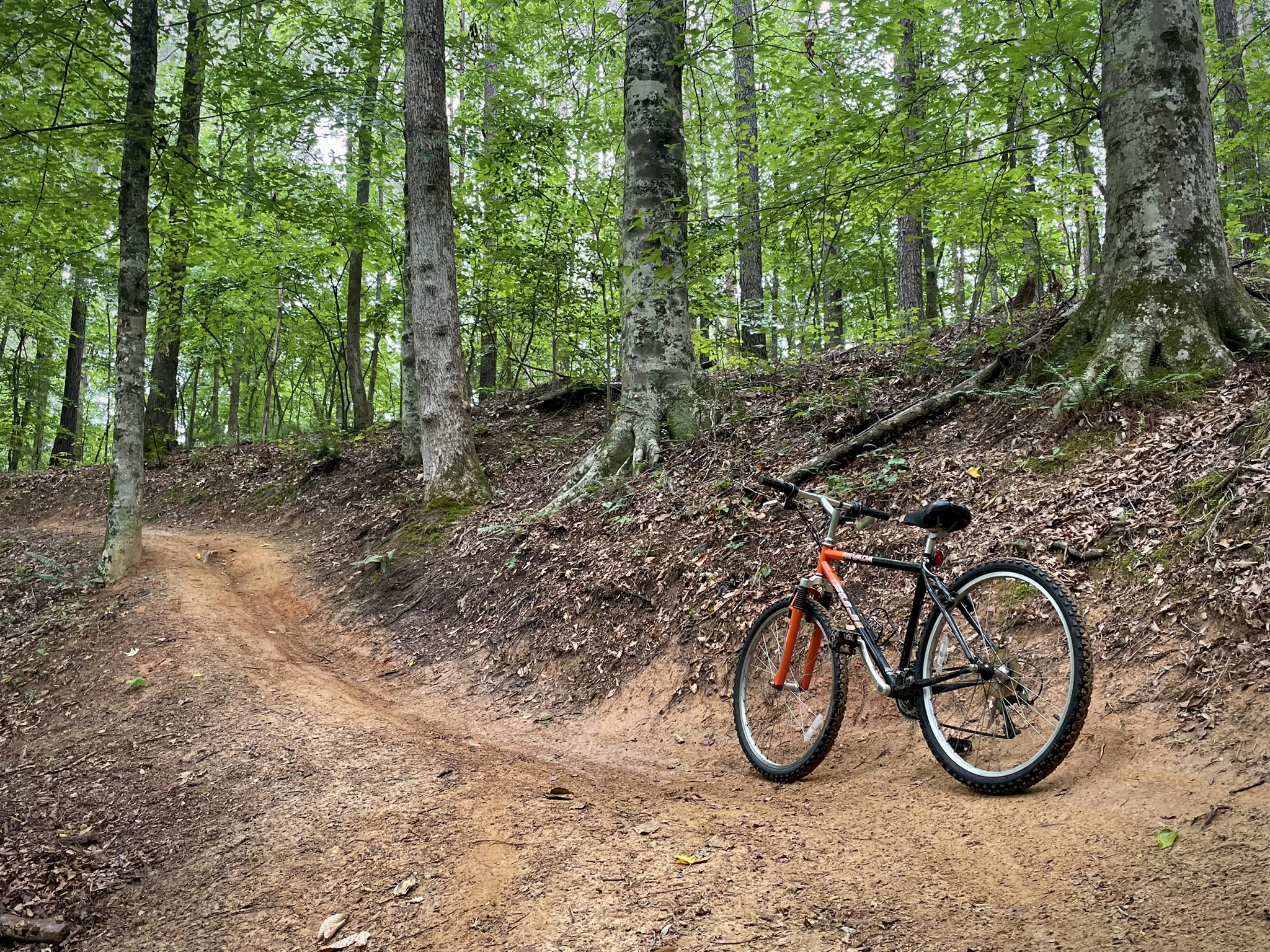Stories

Ride Dirt, Not Mud
Published: December 07, 2023
It’s that time of year again when the trails at Mountain Creek Park are often closed despite seemingly beautiful weather conditions. Why? With low temps and moisture in the soil common in winter months, dirt trails experience a freeze/thaw cycle, causing them to be frozen in the morning and muddy during the day. Just one ride on a soft trail can result in damage that takes hours to fix, necessitating more downtime, so we must close the trails to protect them. Please check trail status before your visit and please don’t ride closed trails to help us preserve them for everyone’s future enjoyment.
To see current trail status, please visit us on Facebook @CatawbaCountyParksNC, on Instagram @catawbacountyparks, or check out the Tarheel Trailblazers trail status page. You may also call the park office during park operating hours at (828) 465-9645.
What is the freeze/thaw cycle?
The article below, originally posted on the Northwest NC MTB Alliance website, is reposted with permission from our friends at The Alliance.
-----
Most riders understand that you shouldn’t ride the trails when they’re muddy. Most riders understand acceptable riding conditions as well. Sunny… dry… go ride! Perfect. But what about this time of year? When is it okay to ride without doing permanent damage to the trail? How would you know if it’s OK to ride before you get to the trail? Understanding the freeze/thaw cycle can help you make that decision of when to ride the trail, when to stay on the road, or when it’s time to take a rest day, drink beer and watch football.
How the Freeze/Cycle Works
As the temperature drops, moisture in the soil freezes. As most of you know from that forgetful moment when you leave a water-bottle in the freezer, water expands as it freezes. When this happens on a trail, the composition of the soil is pretty much blown apart by the expansion of the frozen water molecules. Then, as the temperatures rise, the ‘blown up’ soil compresses and, with water, makes… MUD. Nasty, slimy, slippery mud.
Factors Impacting Freeze/Thaw
- Moisture: The real issue is the presence of moisture in the soil. Even rain from a week or so ago can impact the moisture level in the soil & start the whole process. If the soil is dry, freezing temps won’t have much of an impact on the soil at all. In fact, recently we had a freeze/thaw cycle that had very little impact on the soil, mostly because it was so incredibly dry that there wasn’t enough moisture to expand when temps dropped below freezing.
- Temperature: Air temps & soil temps are two very different things. Let’s say it’s 40 degrees for a few days and then the overnight temperature dips to 28 or 29*F for a couple of hours. Even though the air temp is below freezing, the ground temperature probably won’t go below freezing since dirt is a pretty good insulator. The opposite is true as well. If the ground has been frozen solid for a few days, having air temperatures above freezing for a few hours won’t be enough to thaw the ground. Snow can be a factor in that it has a relationship to the soil temperature. Snow is a great insulator that can either buffer the warmer soil from colder air temperatures OR buffer the colder soil temperatures from warmer air temperatures.
- Time: A very common situation this time of year is one where the trails are frozen until around 10 or 11am and then the increasing air temp and direct sunshine are given enough time to start the thawing process. Two hours can literally change the trail from a perfect, frozen, hard-packed to a sloppy, slushy mess. If you’re going to ride during this period, early is usually better.
Make Good Choices
No matter how much you think you understand the combination of moisture, temperature & time, there’s no substitute for making good choices when you get to the trail. If you see that you’re leaving deep ruts and mud is sticking to your bike, it’s not OK to ride. It’s really frustrating when you’ve checked the weather forecast, packed up all your stuff, made it to the trail and then realize that it’s not in great shape.
It only takes one trip through a soft trail to leave an impact that will take hours to fix. When the ground isn’t dry or frozen enough to support the weight of passers-by, it leaves the imprint of who or whatever went over it. Feet, tires, hooves, or paws – all can be immortalized on off-road trails when the conditions are wrong. The imprints, or ruts, can harden to the point of being almost impossible to fix. This makes the trail difficult or even dangerous for others to use. The damaged trail must be chopped up, reshaped, smoothed, and compressed all over again. Volunteers then spend hours redoing work they’ve already poured blood, sweat, and even tears into.
No weather forecast makes up for good choices on the trail. Be prepared to bail and hit the road, hug your local trail-builder, and help preserve the trails for everyone.
-----
Northwest NC MTB Alliance is a chapter of SORBA, the largest nonprofit mountain biking organization in the Southeastern United States. – promoting land access, trail preservation, and new trail development on federal, state, and local lands in our region. We operate in the geographic area of Northwest NC’s mountains and foothills, including the communities of Boone, Hickory, Lenoir, Marion, Morganton, and Wilkesboro. As a subordinate chapter of SORBA, the Alliance is a non-profit organization. Learn more about The Alliance at ridenwnctrails.com.